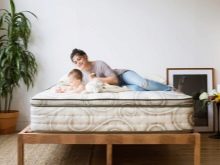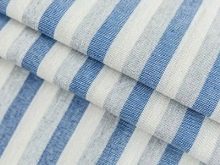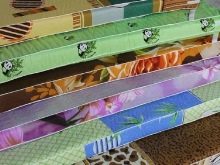Mattress fabric
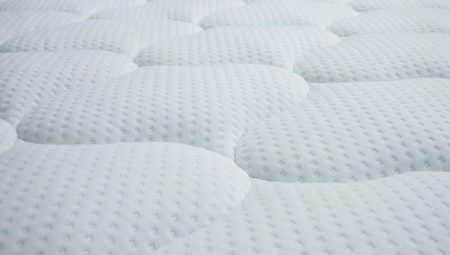
The type of fabric of the mattresses determines their comfort and durability. From the material in this article, you will learn what materials are used in production, what requirements are imposed on them. In addition, we will show you how to choose the best option correctly.
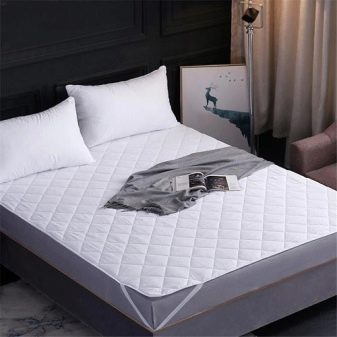
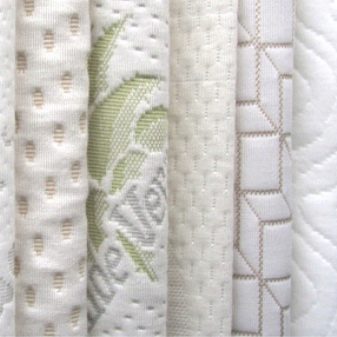
Requirements
Different fabrics are used in the production of mattresses. All of them must meet a number of requirements. Upholstery materials must be dense, resistant to deformation and wear. In the manufacture of mattresses, durable textiles are used that keep their shape well. It is important that it is pleasant to the touch. In this case, the surface texture can be smooth, soft, quilted.
Suitable material type:
- meets the strength requirements;
- unpretentious in maintenance;
- has air permeability;
- protects the filler from bacteria;
- provides a favorable microclimate;
- differs in environmental safety;
- has aesthetic appeal.
The textile for the mattress topper must withstand daily mechanical stress (friction, regular cleaning). The material must be anti-allergenic, not preventing moisture evaporation.
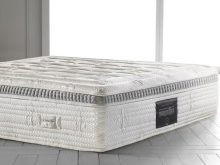
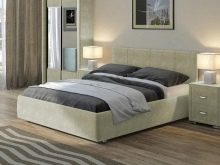
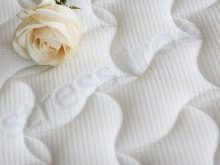
Standard mattress fabrics
Mattress materials vary. The production uses cotton, linen, woolen fibers. For budget models, polyester and polypropylene fibers are used. Mattress teak (colored or striped) is a natural cotton textile with a plain or twill weave. It is environmentally friendly and hygroscopic. Used to cover inexpensive mattresses. It is difficult to clean and absorbs foreign odors.
Printed calico has a plain weave of threads. It can be natural and combined.Polyester threads are woven into the fabric to improve performance. This material is used for covering children's mattresses.

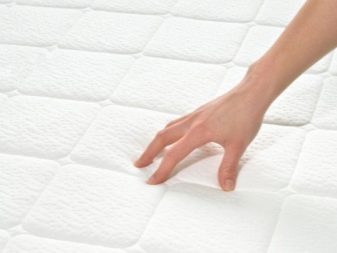
Jacquard is characterized by intricate weaving of threads. It can be natural, synthetic, combined (the best option). Jacquard is durable, dense and durable. It is resistant to stretching and abrasion.
Polycotton outwardly similar to coarse calico, but has a greater percentage of synthetic fibers in the composition. Sometimes it is completely artificial. Used for packaging budget fillers. It is easy to clean but has low breathability.
Knitwear for mattresses can be different (cotton, blended, artificial). Differs in softness and elasticity, pleasant tactile sensations. Over time, it often rolls down and becomes covered with holds.
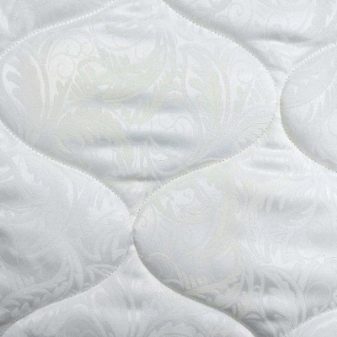
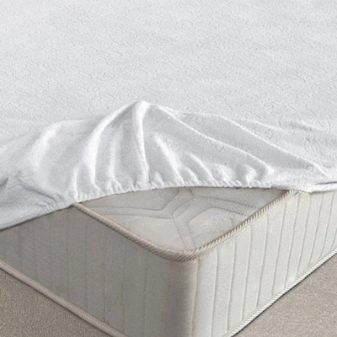
Modern improved materials
To date, mattress fabrics with improved characteristics have been developed. For example, materials have been developed with protection against sudden leaks. There are textiles for creating an air aeration system inside the mat. Technical fabrics are also used as interlayers between upholstery and filler.
- Aloe vera - textiles that have a beneficial effect on the skin. Able to relieve irritation, improves blood flow. It has an antibacterial effect. Used for the production of quilted double-sided covers. Machine washable.
- Bamboo - mattress water-repellent fabric with antibacterial properties. Contributes to the maintenance of comfort and freshness, thermal conservation and thermoregulation. Used for machine washable removable covers.
- Silver - modern quilted fabric with moisture distribution and dirt repelling function. Contains silver threads. This reduces the impact of magnetic anomalies. Anti-static, anti-allergenic textiles.
- Tencel - textiles made from eucalyptus wood. It is used for non-removable mattress covers of traditional and quilted types. It is considered hypoallergenic and antistatic. Promotes an atmosphere of maximum comfort during sleep and relaxation.
- Quattro stagione - a unique type of textile made of cellulose viscose and polyester fibers. It has a silky surface structure and high tensile strength. It is considered a durable material with excellent performance characteristics.
- Antibatterico - modern knitted antistatic fabric with antibacterial impregnation. Differs in soft texture, elasticity. Used for sewing removable and non-removable mattress covers.
- Amicor - textiles based on acrylic fibers. Refers to materials with protection against fungus and bacteria. Differs in resistance to deformation.
- Micro care - fabric that quickly absorbs and evaporates moisture. It has an antifungal effect.
In addition, materials with an anti-stress effect and anti-mite impregnations are used in production. Some manufacturers pack fillers in waterproof membrane covers.
Individual products are manufactured using materials equipped with Thermo Balance, Climat Control, Lux Comfort options.
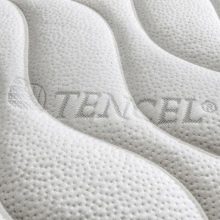
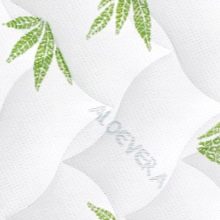
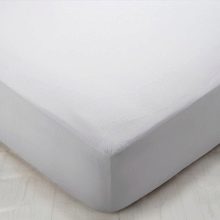
How to choose?
You need to buy a mattress taking into account the appropriate type of upholstery. If we compare the performance characteristics, then jacquard is considered a more durable material. It is as popular as jersey, does not roll and does not give leads in operation. When buying, you need to consider the degree of comfort. Someone cannot sleep on a hard mattress, so they prefer to buy a product with soft upholstery of a mat. In this regard, the best option would be a mattress with a knitted cover.
Polyester is a budget material, but in terms of everyday use it loses to other materials. Polyester covers are poorly breathable. In addition, they are quite slippery, so the bedding will have to be corrected more often than usual. If you have allergies, you need to take the hypoallergenic option.
If you need a combined type option, you should take a closer look at double-sided products. They not only have different side stiffness, but also different upholstery materials.
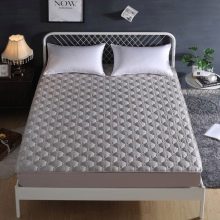
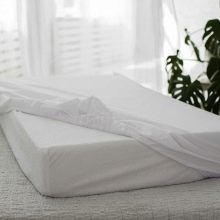
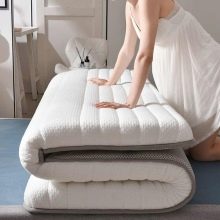
When choosing between mattresses with a removable and non-removable cover, you should give preference to the first type. In this case, you need to pay attention to the features of caring for the product. Some fabrics are not machine washable. When choosing a removable mattress topper, they look to ensure that the material enhances the properties of the mattress. It can be equipped with additional layers to increase user comfort. Some fabrics are stitched to adjust the firmness of the mattress.
If you buy a mattress with non-removable upholstery, you should give preference to a product with a waterproof upholstery fabric. It is ideal for children, the elderly, bedridden patients. The removable cover should not shrink after washing or cleaning. The material should be fairly dense and durable. The color of the product can be white, blue, pink, gray, bright. For children's models, they take textiles in blue, pink, yellow, orange. The colors are different.
In addition to the striped print, it can be floral and plant motifs, images of cartoon characters and fairy tales.
